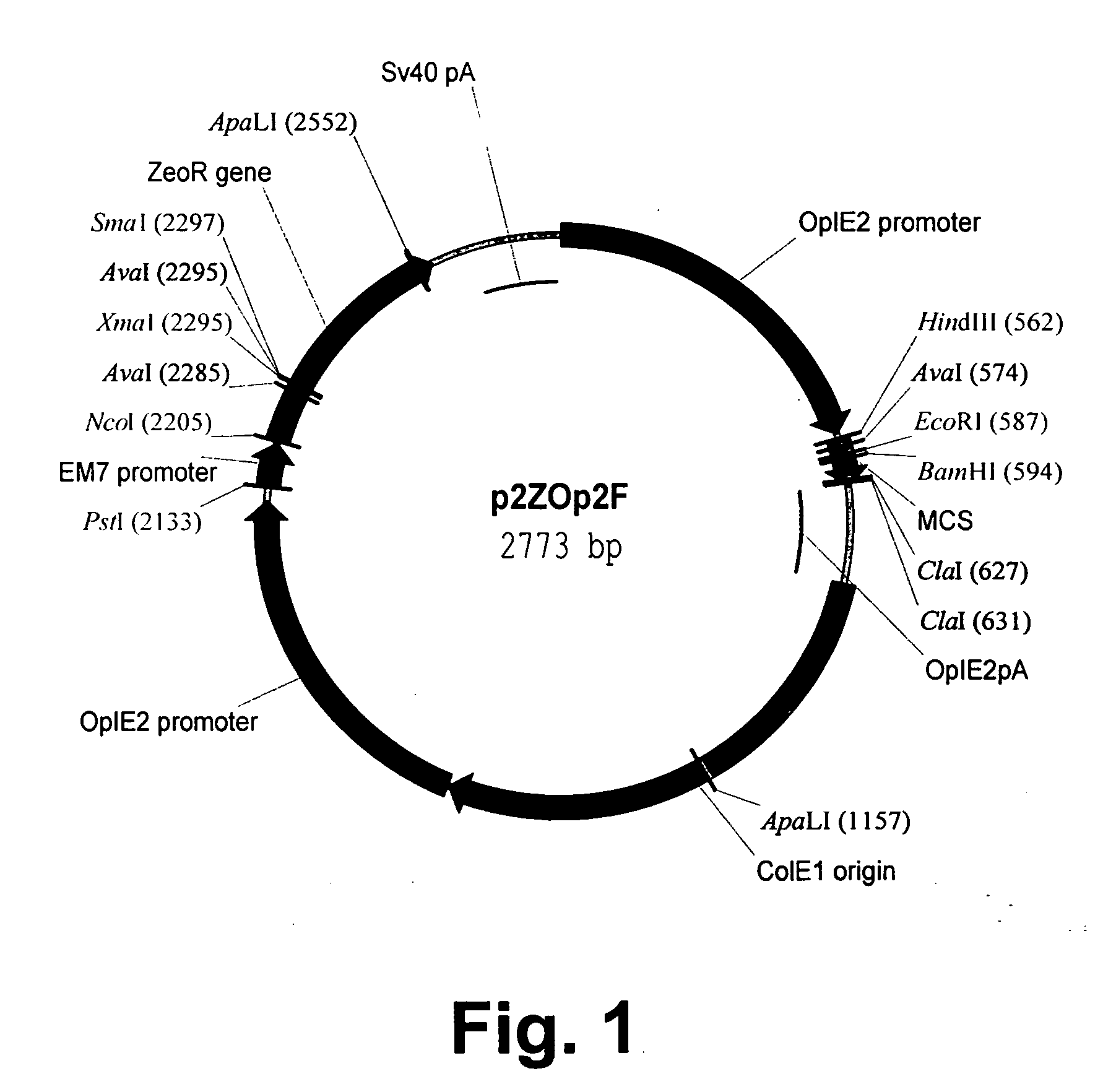Immunogenic mimetics of multimer proteins with promiscuous T cell epitope inserts
a multimer protein and promiscuous technology, applied in the field of immunogenic mimetics of multimer proteins with promiscuous t cell epitope inserts, can solve the problems of impractical refolding, increased complexity of protein in question, and low epitopes compared to native self-proteins, etc., to improve immunogenic analogues, improve stability, and improve characteristics
- Summary
- Abstract
- Description
- Claims
- Application Information
AI Technical Summary
Benefits of technology
Problems solved by technology
Method used
Image
Examples
example 1
Design of 4 New Two-Epitope (P2+P30) Monomer IL5 Constructs
[0235] IL5 is an anti-parallel homo-dimmer, in which the C termini and N termini of the monomers are located closely in the molecule. This opens for the possibility of linking the two monomers into a single monomer, closely resembling the wild-type dimer quarternary structure.
[0236] We have approached this using either the p2 / P30 epitopes as linker or by inserting a di-glycine linker as described previously in Li et al. 1997, PNAS USA 94(13): 6694-9.
[0237] The native hIL5 encoding DNA molecule used in all the research work was purchased from R&D systems (BBG16). This DNA sequence did not include the hIL5 leader sequence; hence was added a synthetic DNA sequence encoding the natural hIL5 leader peptide. The sequences encoding the P2 and P30 T cell epitopes are derived from tetanus toxoid. These sequences were inserted into the native sequence of the gene thus providing the immunogenic variants of IL5. The insertions are made ...
example 2
hIL5.34 and hIL5.35
[0240] In order to have the T-cell epitopes internally in the molecule, P2 and P30 are inserted head to tail as a linker between the two IL5 monomers thereby giving rise to two constructs hIL5-P30-P2-hIL5 (hIL5.34, mature peptide in SEQ ID NOs: 5 and 6) and hIL5-P2-P30-hIL5 (hIL5.35, mature peptide in SEQ ID NOs: 7 and 8) --both DNA constructs encode the natural IL5 leader sequence, resulting in a mature expression product of 266 amino acids. The translation products resulting from these designs are intended to fold into a "monomeric IL5 dimer", i.e. a monomeric molecule that has a tertiary structure that very much resembles the complete 3-dimensional structure of dimeric IL5.
example 3
hIL5.36 & hIL5.37
[0241] Based on the previous successful generation of a biologically active monomer "ILS dimer mimic" by insertion of a di-glycine-linker by J. Li et al., similar, but immunogenic, construct with the addition of T-cell epitopes were designed. The variant hIL5.36 thus has the structure of the mature peptide in SEQ ID NOs: 9 and 10 and variant hIL5.37 has the structure of the mature peptide in SEQ ID NOs: 11 and 12. Both these constructs encode a natural IL5 leader sequence followed by the first 4 amino acids in IL5 that in turn is followed by the first inserted epitope--the other epitope is positioned in the C-terminus.
[0242] There are 2 main reasons that the N-terminal epitope is not positioned N-terminally to the complete IL5 sequence in these two constructs instead of aiming at preserving the hIL5 sequence. By using the natural hIL5 leader peptide together with the N-terminus of hIL5 we ensure that the leader peptide is cleaved off correctly. And, since the N-term...
PUM
| Property | Measurement | Unit |
|---|---|---|
| MW | aaaaa | aaaaa |
| MW | aaaaa | aaaaa |
| MW | aaaaa | aaaaa |
Abstract
Description
Claims
Application Information
 Login to View More
Login to View More - R&D
- Intellectual Property
- Life Sciences
- Materials
- Tech Scout
- Unparalleled Data Quality
- Higher Quality Content
- 60% Fewer Hallucinations
Browse by: Latest US Patents, China's latest patents, Technical Efficacy Thesaurus, Application Domain, Technology Topic, Popular Technical Reports.
© 2025 PatSnap. All rights reserved.Legal|Privacy policy|Modern Slavery Act Transparency Statement|Sitemap|About US| Contact US: help@patsnap.com



